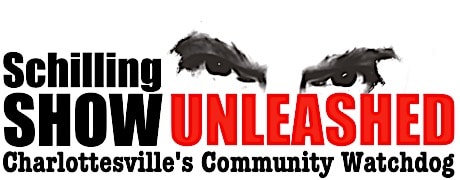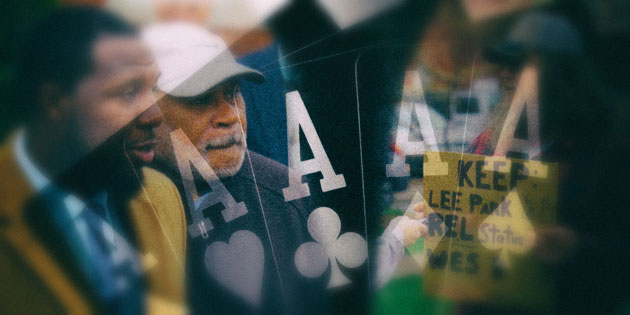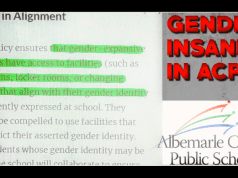Charlottesville’s recently appointed Blue Ribbon Commission on Race, Memorials and Public Places (BRC) appears to be a politically stacked deck.
Sparked by Vice Mayor Wes Bellamy’s public call to remove the Robert E. Lee statue from Lee Park, and unanimously convened by resolution of the Charlottesville City Council on May 6, the BRC was given the following charge:
Providing options to Council for specific ways in which our public spaces are used, or could be used, to address race, including, but not limited to:
- Relocating, or adding context to, existing Confederate statues;
- Augmenting the slave auction block at Court Square;
- Completing the Daughters of Zion cemetery;
- Providing a further narrative for the Vinegar Hill community in conjunction with the ongoing work of the African American Heritage Center;
- Highlighting and linking existing historic places, such as the Tonsler House and the Drewary Brown Memorial Bridge;
- Commissioning a new memorial or memorials to an African-American leader;
- Identifying naming opportunities;
- Identifying additional opportunities within the City to enhance a holistic reflection
While the council received 74 applications (download links below) representing a panoply of views, backgrounds, and expertise, no member of the BRC openly supports retaining the Robert E. Lee statue.
Citing the statue’s symbolism of white supremacy and racism, BRC appointee, John Edwin Mason, an associate history professor at the University of Virginia, has publicly stated his desire to have the Lee statue removed from Lee Park. From the March 23, 2016 Cavalier Daily:
“The statue should be removed because it’s a symbol of racism, intolerance and white supremacy,” Mason said. “Robert E. Lee, as we know, commanded the Confederate armies in a war that the essential purpose of which was to preserve slavery and to preserve white supremacy.”
Mason said the relationship between the statue — which has an unobstructed view on its four sides and sits in the middle of the park — and the viewer makes the viewer feel “small and insignificant.”
“That’s never going away,” Mason said. “So if we want a city that does not celebrate racism, does not celebrate the cause of the Confederacy, then we’re going to have to remove it.”
Although City Council’s resolution specifies “open-mindedness” as a qualifying criterion for BRC membership, apparently, an exception was made for Mr. Mason.
Notably absent from the Blue Ribbon Commission on Race, Memorials and Public Places, but present in the applicant pool are:
- A Civil War historian
- A native of Charlottesville
- A racial balance reflecting the city’s population (considered an important factor in many other areas such as teaching, policing, city council makeup, etc.)
Ironically, Blake Caravati and Frank Buck, both white, Democrat, former mayors of Charlottesville—and both of whom had stacked their own decks while in city hall—applied for the BRC but were not selected.
Given the BRC’s nine-member configuration, Mason’s predetermined vote represents 20% of what’s necessary to recommend removal of the statue. Considering the professional and political affiliations of several other commissioners (i.e. NAACP, African America Heritage Center, Charlottesville Human Rights Commission), the cards dealt indicate a tough road ahead for Robert E. Lee—not to mention Stonewall Jackson, Thomas Jefferson—and even Monticello.
Download and read the full slate of Blue Ribbon Commission applications below:
- Blue Ribbon Commission on Race, Memorials and Public Places applications 1/7
- Blue Ribbon Commission on Race, Memorials and Public Places applications 2/7
- Blue Ribbon Commission on Race, Memorials and Public Places applications 3/7
- Blue Ribbon Commission on Race, Memorials and Public Places applications 4/7
- Blue Ribbon Commission on Race, Memorials and Public Places applications 5/7
- Blue Ribbon Commission on Race, Memorials and Public Places applications 6/7
- Blue Ribbon Commission on Race, Memorials and Public Places applications 7/7









Wow. 6 of the 8 points of the board's mission are a racial agenda. The slave auction block Number Zero was removed when a living history reenactment hurt someone's feelings. The late Fred Dove kept nagging the city until the smaller marker replacement. Dove brought news of the 1865 date of Jefferson School to Schilling Show listeners when local media was suppressing the history. Daughters of Zion is a segregated cemetery (all affluent black) since 1873, and city-owned since Nov. 4, 1971 urban renewal. The Vinegar Hill narrative is to reinforce that this is the one and only lost neighborhood, despite the evidence. The Benjamin Tonsler House, who attended the first year of Jefferson School and rose to become the principal. The 6th goal is explicit to recognize black heroes. The first goal was to remove recognition of whites. This is called "holistic reflection." If you thought there would be talk of Jefferson School alongside Midway School, Charlottesville High 1893 to 1940, that's not how racist history works. It's payback time for white history to be erased as they tried to do to black history. In regards to the commission applications, it's an opportunity for your resume. But you will only be considered if you check YES city resident. Caravati's resume made me laugh. My application for urban renewal commission fell into a black hole until I called for the status and was told it would be kept on file for a year. http://super-blair.blogspot.com/2013/10/application-for-housing-authority-board.html
The Resolution stated that the BRC should "…include six at-large members and one representative each from the PLACE Design Task Force, Human Rights Commission, and Historic Resources Committee.
Of the nine applicants selected by City Councilors, the BRC included TWO members of the Charlottesville Human Rights Commission; Melvin Burruss and Gordon S. Fields.
Wes Bellamy, american hero, living up to stereotypes: https://imgur.com/a/PIFtB